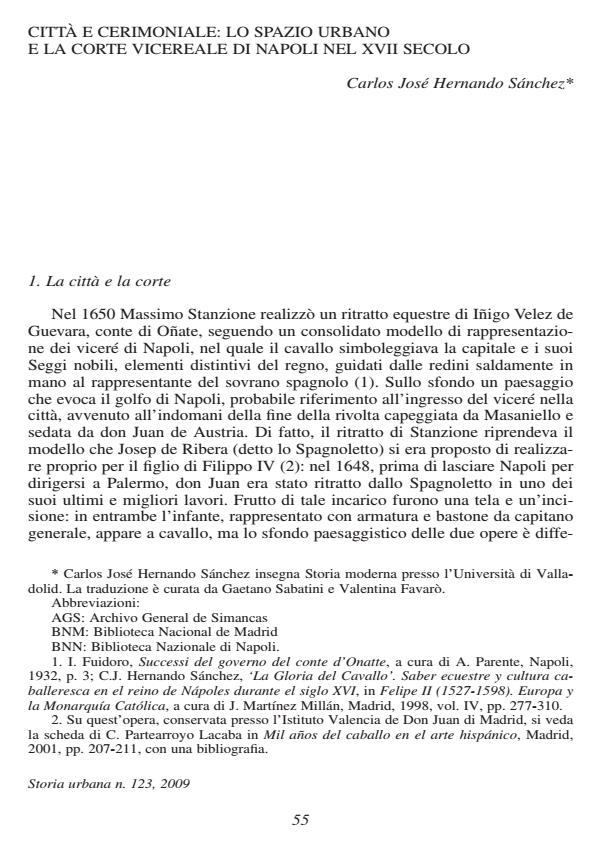Città e cerimoniale: lo spazio urbano e la corte vicereale di Napoli nel XVII secolo
Journal title STORIA URBANA
Author/s Sànchez Carlos Josè Hernando
Publishing Year 2009 Issue 2009/123
Language Italian Pages 28 P. 55-82 File size 5769 KB
DOI 10.3280/SU2009-123003
DOI is like a bar code for intellectual property: to have more infomation
click here
Below, you can see the article first page
If you want to buy this article in PDF format, you can do it, following the instructions to buy download credits

FrancoAngeli is member of Publishers International Linking Association, Inc (PILA), a not-for-profit association which run the CrossRef service enabling links to and from online scholarly content.
Città e cerimoniale: lo spazio urbano e la corte vicereale di Napoli nel XVII secolo - City and ceremonial: urban space and the vice-royal court during the 17th century in Naples The article intends to refute the historiographical tradition that, starting from the so-called Masaniello revolt, maintains the dramatically negative effects of the Spanish presence in Naples. Actually, the Spanish government was characterised for an high level of attention and for a constant effort of communication with Neapolitan community, both on popular and aristocratic level, although without giving up the basis of the royal power. The process of mediation was carried out through a series of complex ceremonials, also aimed to shape the urban space. The vice-royal court was the central point of this process, from which spread all over the city the courtesan etiquette, based on the personal honour. The religious devotions, of course, played an important role in the ceremonials, as they were necessary to reinforce the process of political legitimation of the Spanish power. Some particular cults, linked to specific areas in the town, were adopted by the vice-royal entourage as a complementary way to emphasize the Spanish presence in town.
- El nuncio apostólico en Madrid: espacio urbano y ceremonial de corte en el siglo XVII Valentina Emiliani, in Studia Historica: Historia Moderna /2025 pp.77
DOI: 10.14201/shhmo202547177114 - Feste di piazza e cerimonie di palazzo nella Napoli borbonica : le celebrazioni per la nascita della real prole Elena Papagna, in Mélanges de l'École française de Rome. Italie et Méditerranée /2015
DOI: 10.4000/mefrim.2194
Sànchez Carlos Josè Hernando, Città e cerimoniale: lo spazio urbano e la corte vicereale di Napoli nel XVII secolo in "STORIA URBANA " 123/2009, pp 55-82, DOI: 10.3280/SU2009-123003